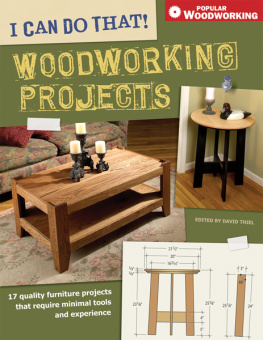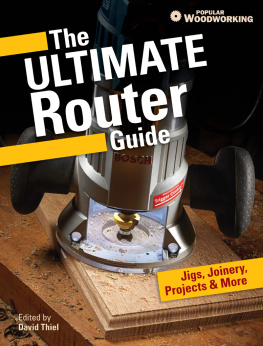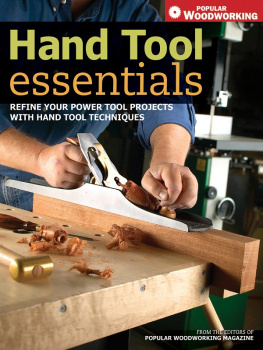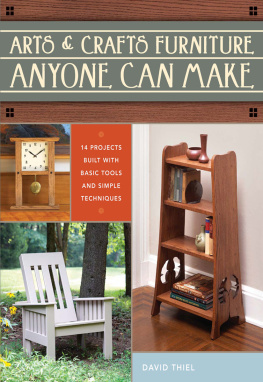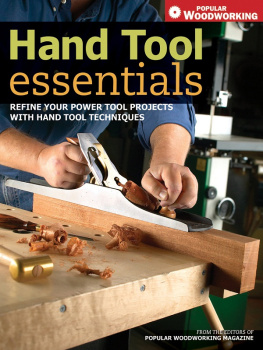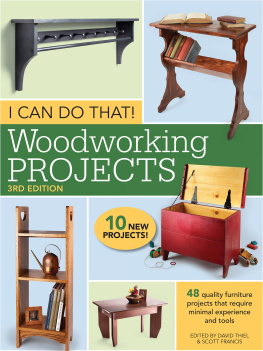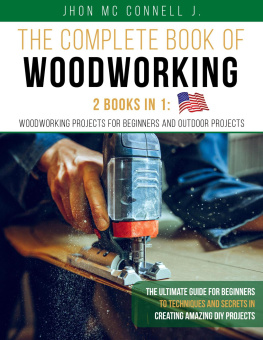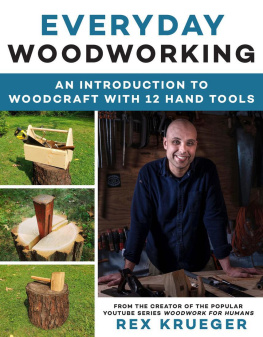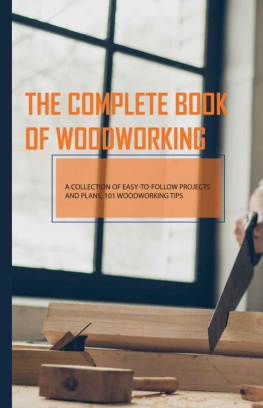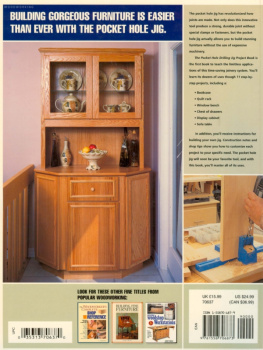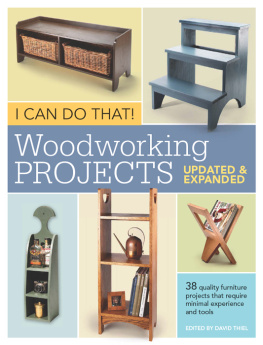
I CAN DO THAT! WOODWORKING PROJECTS
EDITED BY DAVID THIEL

I Can Do That! Woodworking Projects. Copyright 2007 by Popular Woodworking Books. Printed and bound in China. All rights reserved. No part of this book may be reproduced in any form or by any electronic or mechanical means including information storage and retrieval systems without permission in writing from the publisher, except by a reviewer, who may quote brief passages in a review. Published by Popular Woodworking Books, an imprint of F+W Publications, Inc., 4700 East Galbraith Road, Cincinnati, Ohio, 45236. First edition.
Distributed in Canada by Fraser Direct 100 Armstrong Avenue Georgetown, Ontario L7G 5S4 Canada
Distributed in the U.K. and Europe by David & Charles Brunel House Newton Abbot Devon TQ12 4PU England Tel: (+44) 1626 323200 Fax: (+44) 1626 323319 E-mail: postmaster@davidandcharles.co.uk
Distributed in Australia by Capricorn Link P.O. Box 704 Windsor, NSW 2756 Australia
Visit our Web site at www.popularwoodworking.com or our consumer Web site at www.fwbookstore.com for information on more resources for woodworkers and other arts and crafts projects.
Other fine Popular Woodworking Books are available from your local bookstore or direct from the publisher.
11 10 09 08 07 5 4 3 2 1
Library of Congress Cataloging-in-Publication Data
I can do that! Woodworking projects / edited by David Thiel. 1st ed.
p. cm.
ISBN-10: 1-55870-816-2 (pbk.: alk. paper)
ISBN-13: 978-1-55870-816-7 (pbk.: alk. paper)
ISBN-13: 978-1-55870-957-7 (EPUB)
1. Woodwork Amateurs' manuals. 2. House furnishings. I. Thiel, David, 1962
TT185.I22 2007
684.08 dc22
2007009939
ACQUISITIONS EDITOR: David Thiel
EDITOR:
David Thiel
DESIGNER: Brian Roeth
PRODUCTION COORDINATOR: Mark Griffin
ILLUSTRATOR: John Hutchinson

Metric Conversion Chart
| to convert | to | multiply by |
|---|
| Inches | Centimeters | 2.54 |
| Centimeters | Inches | 0.4 |
| Feet | Centimeters | 30.5 |
| Centimeters | Feet | 0.03 |
| Yards | Meters | 0.9 |
| Meters | Yards | 1.1 |
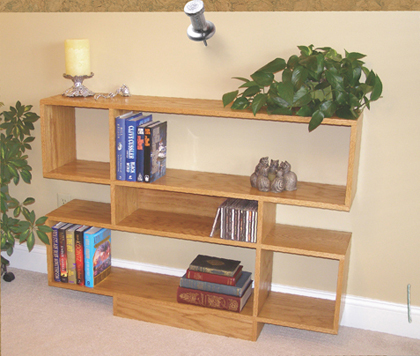
READ THIS IMPORTANT SAFETY NOTICE
To prevent accidents, keep safety inmind while you work. Use the safety guards installed on power equipment; they are for your protection. When working on power equipment, keep fin-gers away from saw blades, wear safety goggles to prevent injuries from flying wood chips and sawdust, wear head phonesto protect your hearing, and considerinstalling adust vacuum to reduce the amount of airborne sawdust in your woodshop. Don't wear loose clothing, such as neck ties or shirts with loose sleeves, or jewelry, such as rings, necklaces or brace lets, when working on power equipment. Tie back long hair to prevent it from getting caught in your equipment. People who are sensitive to certain chemicals should check the chemical content of any product before using it. The authors and editors who compiled this book have tried to make the contents as accurate and correct as possible. Plans, illustrations, photographs and text have been carefully checked. All instruc-tions, plans and projects should be carefully read, studied and understood before beginning construct ion. Due to the variability of local conditions, construction materials, skill levels, etc., neither the author nor Popular Woodworking Books assumes any responsibility for any accidents, injuries, damages or other losses incurred resulting from the material presented in this book. Prices listed for supplies and equipment were current at the time of publication and are subject to change. Glass shelving should have all edges polished and must be tempered. Untempered glass shelves may shatter and can cause serious bodily injury. Tem-pered shelves are very strong and if they break will just crumble, minimizing personal injury.
FROM THE EDITOR
It was with great pride that I was able to be a part of the Popular Woodo working magazine staff that brought the I Can Do That! concept to life. It gave me even more pleasure to be able to expand the idea into book form as presented here. Special recognition goes to the magazine staff, Christopher Schwarz, Robert Lang and Megan Fitzpatrick, for the initial (and continuing) work on the concept. Extendedre cognition goes to Dave Griessman, A.J.Hamler and Glen Huey for taking up the task of building new projects, and for accepting the idealogy of turning out quality projects with a minimum of tools and basic home center materials. Thanks also to John Hutchinson for combining some of his past work for the magazine with new material to present all of our illustrations for the projectsa vital part of the successful building process. Thanks, once again, to all.
David Thiel
ABOUT THE AUTHORS
A.J. Hamler
A.J.Hamler is the former editor of Wood-shop News and was the founding editor of Woodcraft Magazine. As a freelance writer, A.J.'s woodworking articles have appeared in most of the publications in the field and he recently served as Senior Editor Woodworker for The Collins Complete Woodworkerfor HarperCollins/Smithsonian. When interests not in his workshop, his other include science fiction (writing as A.J. Austin he's published two novels and numerous cooking short stories), gourmet and Civil War reenacting. He lives in Williamstown, W.Va.
Megan Fitzpatrick
Megan is managing editor for Popular Woodworking and earned a master's de ni-versity gree in English literature from the U of Cincinnati, which enables her to quote large blocks of Shakespeare mighty handy in a shop setting.
Dave Griessman
Dave builds reproduction furniture in his owning free time and is working towards his own furniture making business. Dave lives in Cincinnati, Ohio.
Glen Huey
Glen recently joined the staff of Popular Woodworking as senior editor, but has been in the pages as a contributing editor for a number of years. He is the author of a number of books on building furniture. He also teaches and hosts DVDs about furniture building.
Robert Lang
Bob is senior editor with Popular Woodworking magazine and grew up in north eastern Ohio and has been a professional woodworker since the early 1970s. He learned woodworking repairing wooden boats com-mercia at Lake Erie and in a large l shop in Cleveland. Along the way he studied industrial design at The Ohio State University, and his experi-ence includes building custom furniture and cabinets as well as managing and engineering large architectural millwork projects. He is the author of several Shop Drawings books about furniture and interiors of the Arts & Crafts Movement of the early 1900s.
Christopher Schwarz
Chris is editor of Popular Woodworking

